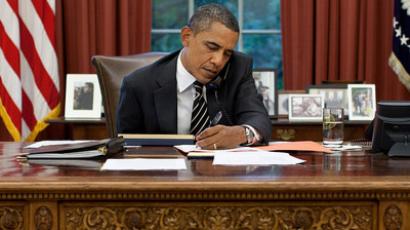Secret documents reveal truth about American massacre in Iraq

President Barack Obama may have declared the war in Iraq over, but unearthed documents thought to have been destroyed are bringing to light gruesome details from a skirmish that the military wishes hadn’t happened.
Scouring a junkyard outside of Baghdad, a reporter for The New York Times recently came across 400 pages of interrogations detailing the truth behind a massacre of dozens of Iraqi civilians that was carried out by American troops in 2005 in the town of Haditha. The documents, once under lock-and-key, were supposed to be destroyed. The reporter, however, came upon the remnants of the slightly-charred file as he picked through the debris in the dump.According to the reporter, the junkyard attendant was using pages of the paper for kindling as he roasted a dinner of smoked carp in a trailer on the site.The documents closely detail the exact events of November 19, 2005, a gruesome day in the Iraq War which was yet to reach its halfway mark yet. By the end of the attack by US Marines on Iraqi civilians that day, 24 non-combatants were dead, including several small children. According to the newly discovered papers, however, the bloodbath outside of Baghdad had little impact on the American soldiers, who were already desensitized to the ways of war.In a testimony from Major General Steve Johnson included in the paperwork, he described the toll of civilian lives as “a cost of doing business.” Other soldiers said that stumbling upon 20 dead civilians was no longer a site viewed as “remarkable,” but rather routine.Colonel Thomas Cariker, a commander in Anbar Province at the time, mentions in the reports that grenade attacks at checkpoints would often cause “collateral with civilians.”“I mean, whether it’s a result of our action or other action, you know, discovering 20 bodies, throats slit, 20 bodies, you know, beheaded, 20 bodies here, 20 bodies there,” carelessly remarked the soldier.On that November day in Haditha , women, children and a 76-year-old civilian sitting in a wheelchair were among those executed. An investigation opened up over the incident, though charges were dropped against six of the Marines linked to the incident, and a seventh was acquitted. Only one Marine remains to go to court for the incident, but not until next year — seven years after the massacre.When asked for comment, Colonel Barry Johnson, a spokesman for US military involvement in Iraq, told the Times, ''Despite the way in which they were improperly discarded and came into your possession, we are not at liberty to discuss classified information.”














